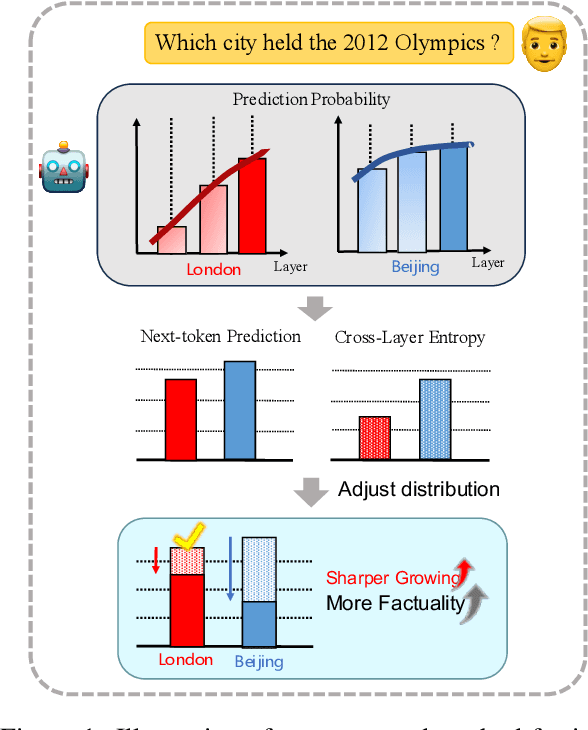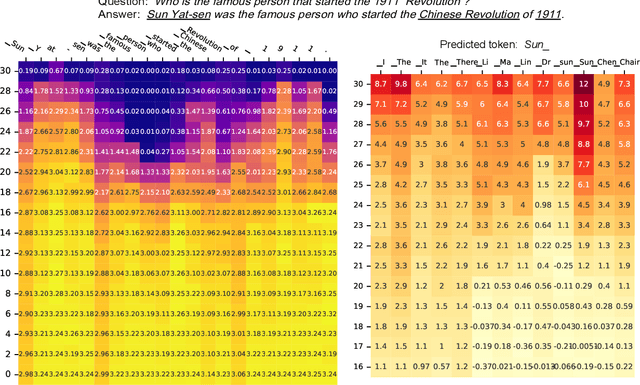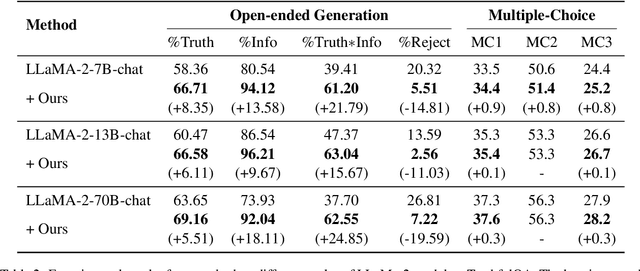Yi Shen
Group Distributionally Robust Machine Learning under Group Level Distributional Uncertainty
Sep 10, 2025Abstract:The performance of machine learning (ML) models critically depends on the quality and representativeness of the training data. In applications with multiple heterogeneous data generating sources, standard ML methods often learn spurious correlations that perform well on average but degrade performance for atypical or underrepresented groups. Prior work addresses this issue by optimizing the worst-group performance. However, these approaches typically assume that the underlying data distributions for each group can be accurately estimated using the training data, a condition that is frequently violated in noisy, non-stationary, and evolving environments. In this work, we propose a novel framework that relies on Wasserstein-based distributionally robust optimization (DRO) to account for the distributional uncertainty within each group, while simultaneously preserving the objective of improving the worst-group performance. We develop a gradient descent-ascent algorithm to solve the proposed DRO problem and provide convergence results. Finally, we validate the effectiveness of our method on real-world data.
JRDB-Reasoning: A Difficulty-Graded Benchmark for Visual Reasoning in Robotics
Aug 14, 2025Abstract:Recent advances in Vision-Language Models (VLMs) and large language models (LLMs) have greatly enhanced visual reasoning, a key capability for embodied AI agents like robots. However, existing visual reasoning benchmarks often suffer from several limitations: they lack a clear definition of reasoning complexity, offer have no control to generate questions over varying difficulty and task customization, and fail to provide structured, step-by-step reasoning annotations (workflows). To bridge these gaps, we formalize reasoning complexity, introduce an adaptive query engine that generates customizable questions of varying complexity with detailed intermediate annotations, and extend the JRDB dataset with human-object interaction and geometric relationship annotations to create JRDB-Reasoning, a benchmark tailored for visual reasoning in human-crowded environments. Our engine and benchmark enable fine-grained evaluation of visual reasoning frameworks and dynamic assessment of visual-language models across reasoning levels.
FairPOT: Balancing AUC Performance and Fairness with Proportional Optimal Transport
Aug 05, 2025Abstract:Fairness metrics utilizing the area under the receiver operator characteristic curve (AUC) have gained increasing attention in high-stakes domains such as healthcare, finance, and criminal justice. In these domains, fairness is often evaluated over risk scores rather than binary outcomes, and a common challenge is that enforcing strict fairness can significantly degrade AUC performance. To address this challenge, we propose Fair Proportional Optimal Transport (FairPOT), a novel, model-agnostic post-processing framework that strategically aligns risk score distributions across different groups using optimal transport, but does so selectively by transforming a controllable proportion, i.e., the top-lambda quantile, of scores within the disadvantaged group. By varying lambda, our method allows for a tunable trade-off between reducing AUC disparities and maintaining overall AUC performance. Furthermore, we extend FairPOT to the partial AUC setting, enabling fairness interventions to concentrate on the highest-risk regions. Extensive experiments on synthetic, public, and clinical datasets show that FairPOT consistently outperforms existing post-processing techniques in both global and partial AUC scenarios, often achieving improved fairness with slight AUC degradation or even positive gains in utility. The computational efficiency and practical adaptability of FairPOT make it a promising solution for real-world deployment.
Next-User Retrieval: Enhancing Cold-Start Recommendations via Generative Next-User Modeling
Jun 18, 2025Abstract:The item cold-start problem is critical for online recommendation systems, as the success of this phase determines whether high-quality new items can transition to popular ones, receive essential feedback to inspire creators, and thus lead to the long-term retention of creators. However, modern recommendation systems still struggle to address item cold-start challenges due to the heavy reliance on item and historical interactions, which are non-trivial for cold-start items lacking sufficient exposure and feedback. Lookalike algorithms provide a promising solution by extending feedback for new items based on lookalike users. Traditional lookalike algorithms face such limitations: (1) failing to effectively model the lookalike users and further improve recommendations with the existing rule- or model-based methods; and (2) struggling to utilize the interaction signals and incorporate diverse features in modern recommendation systems. Inspired by lookalike algorithms, we propose Next-User Retrieval, a novel framework for enhancing cold-start recommendations via generative next-user modeling. Specifically, we employ a transformer-based model to capture the unidirectional relationships among recently interacted users and utilize these sequences to generate the next potential user who is most likely to interact with the item. The additional item features are also integrated as prefix prompt embeddings to assist the next-user generation. The effectiveness of Next-User Retrieval is evaluated through both offline experiments and online A/B tests. Our method achieves significant improvements with increases of 0.0142% in daily active users and +0.1144% in publications in Douyin, showcasing its practical applicability and scalability.
Hunyuan-TurboS: Advancing Large Language Models through Mamba-Transformer Synergy and Adaptive Chain-of-Thought
May 21, 2025Abstract:As Large Language Models (LLMs) rapidly advance, we introduce Hunyuan-TurboS, a novel large hybrid Transformer-Mamba Mixture of Experts (MoE) model. It synergistically combines Mamba's long-sequence processing efficiency with Transformer's superior contextual understanding. Hunyuan-TurboS features an adaptive long-short chain-of-thought (CoT) mechanism, dynamically switching between rapid responses for simple queries and deep "thinking" modes for complex problems, optimizing computational resources. Architecturally, this 56B activated (560B total) parameter model employs 128 layers (Mamba2, Attention, FFN) with an innovative AMF/MF block pattern. Faster Mamba2 ensures linear complexity, Grouped-Query Attention minimizes KV cache, and FFNs use an MoE structure. Pre-trained on 16T high-quality tokens, it supports a 256K context length and is the first industry-deployed large-scale Mamba model. Our comprehensive post-training strategy enhances capabilities via Supervised Fine-Tuning (3M instructions), a novel Adaptive Long-short CoT Fusion method, Multi-round Deliberation Learning for iterative improvement, and a two-stage Large-scale Reinforcement Learning process targeting STEM and general instruction-following. Evaluations show strong performance: overall top 7 rank on LMSYS Chatbot Arena with a score of 1356, outperforming leading models like Gemini-2.0-Flash-001 (1352) and o4-mini-2025-04-16 (1345). TurboS also achieves an average of 77.9% across 23 automated benchmarks. Hunyuan-TurboS balances high performance and efficiency, offering substantial capabilities at lower inference costs than many reasoning models, establishing a new paradigm for efficient large-scale pre-trained models.
Enhancing Cooperative Multi-Agent Reinforcement Learning with State Modelling and Adversarial Exploration
May 08, 2025Abstract:Learning to cooperate in distributed partially observable environments with no communication abilities poses significant challenges for multi-agent deep reinforcement learning (MARL). This paper addresses key concerns in this domain, focusing on inferring state representations from individual agent observations and leveraging these representations to enhance agents' exploration and collaborative task execution policies. To this end, we propose a novel state modelling framework for cooperative MARL, where agents infer meaningful belief representations of the non-observable state, with respect to optimizing their own policies, while filtering redundant and less informative joint state information. Building upon this framework, we propose the MARL SMPE algorithm. In SMPE, agents enhance their own policy's discriminative abilities under partial observability, explicitly by incorporating their beliefs into the policy network, and implicitly by adopting an adversarial type of exploration policies which encourages agents to discover novel, high-value states while improving the discriminative abilities of others. Experimentally, we show that SMPE outperforms state-of-the-art MARL algorithms in complex fully cooperative tasks from the MPE, LBF, and RWARE benchmarks.
Quantitative Analysis of Performance Drop in DeepSeek Model Quantization
May 05, 2025Abstract:Recently, there is a high demand for deploying DeepSeek-R1 and V3 locally, possibly because the official service often suffers from being busy and some organizations have data privacy concerns. While single-machine deployment offers infrastructure simplicity, the models' 671B FP8 parameter configuration exceeds the practical memory limits of a standard 8-GPU machine. Quantization is a widely used technique that helps reduce model memory consumption. However, it is unclear what the performance of DeepSeek-R1 and V3 will be after being quantized. This technical report presents the first quantitative evaluation of multi-bitwidth quantization across the complete DeepSeek model spectrum. Key findings reveal that 4-bit quantization maintains little performance degradation versus FP8 while enabling single-machine deployment on standard NVIDIA GPU devices. We further propose DQ3_K_M, a dynamic 3-bit quantization method that significantly outperforms traditional Q3_K_M variant on various benchmarks, which is also comparable with 4-bit quantization (Q4_K_M) approach in most tasks. Moreover, DQ3_K_M supports single-machine deployment configurations for both NVIDIA H100/A100 and Huawei 910B. Our implementation of DQ3\_K\_M is released at https://github.com/UnicomAI/DeepSeek-Eval, containing optimized 3-bit quantized variants of both DeepSeek-R1 and DeepSeek-V3.
DAST: Difficulty-Adaptive Slow-Thinking for Large Reasoning Models
Mar 06, 2025Abstract:Recent advancements in slow-thinking reasoning models have shown exceptional performance in complex reasoning tasks. However, these models often exhibit overthinking-generating redundant reasoning steps for simple problems, leading to excessive computational resource usage. While current mitigation strategies uniformly reduce reasoning tokens, they risk degrading performance on challenging tasks that require extended reasoning. This paper introduces Difficulty-Adaptive Slow-Thinking (DAST), a novel framework that enables models to autonomously adjust the length of Chain-of-Thought(CoT) based on problem difficulty. We first propose a Token Length Budget (TLB) metric to quantify difficulty, then leveraging length-aware reward shaping and length preference optimization to implement DAST. DAST penalizes overlong responses for simple tasks while incentivizing sufficient reasoning for complex problems. Experiments on diverse datasets and model scales demonstrate that DAST effectively mitigates overthinking (reducing token usage by over 30\% on average) while preserving reasoning accuracy on complex problems.
Improve Decoding Factuality by Token-wise Cross Layer Entropy of Large Language Models
Feb 05, 2025



Abstract:Despite their impressive capacities, Large language models (LLMs) often struggle with the hallucination issue of generating inaccurate or fabricated content even when they possess correct knowledge. In this paper, we extend the exploration of the correlation between hidden-state prediction changes and output factuality into a deeper, token-wise level. Based on the insights , we propose cross-layer Entropy eNhanced Decoding (END), a decoding method that mitigates hallucinations without requiring extra training. END leverages inner probability changes across layers to individually quantify the factual knowledge required for each candidate token, and adjusts the final predicting distribution to prioritize tokens with higher factuality. Experiments on both hallucination and QA benchmarks demonstrate that END significantly enhances the truthfulness and informativeness of generated content while maintaining robust QA accuracy. Moreover, our work provides a deeper perspective on understanding the correlations between inherent knowledge and output factuality.
Hypercube Policy Regularization Framework for Offline Reinforcement Learning
Nov 07, 2024Abstract:Offline reinforcement learning has received extensive attention from scholars because it avoids the interaction between the agent and the environment by learning a policy through a static dataset. However, general reinforcement learning methods cannot get satisfactory results in offline reinforcement learning due to the out-of-distribution state actions that the dataset cannot cover during training. To solve this problem, the policy regularization method that tries to directly clone policies used in static datasets has received numerous studies due to its simplicity and effectiveness. However, policy constraint methods make the agent choose the corresponding actions in the static dataset. This type of constraint is usually over-conservative, which results in suboptimal policies, especially in low-quality static datasets. In this paper, a hypercube policy regularization framework is proposed, this method alleviates the constraints of policy constraint methods by allowing the agent to explore the actions corresponding to similar states in the static dataset, which increases the effectiveness of algorithms in low-quality datasets. It was also theoretically demonstrated that the hypercube policy regularization framework can effectively improve the performance of original algorithms. In addition, the hypercube policy regularization framework is combined with TD3-BC and Diffusion-QL for experiments on D4RL datasets which are called TD3-BC-C and Diffusion-QL-C. The experimental results of the score demonstrate that TD3-BC-C and Diffusion-QL-C perform better than state-of-the-art algorithms like IQL, CQL, TD3-BC and Diffusion-QL in most D4RL environments in approximate time.
 Add to Chrome
Add to Chrome Add to Firefox
Add to Firefox Add to Edge
Add to Edge